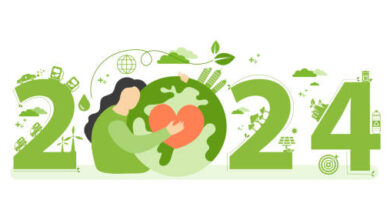
Global warming, also known as climate change, is one of the most pressing issues facing our world today. It is a phenomenon that has captured the attention of scientists, policymakers, and the general public alike. The Earth’s average temperature has been steadily rising over the past century, and the consequences of this trend are already being felt across the globe. In this blog post, we will delve into the causes of global warming and explore potential solutions that can help us mitigate its effects. It is time for all of us to understand how we got here and take action to protect our planet for future generations.
The Origin and Evolution of Climate Change
The story of climate change begins millions of years ago, when the Earth’s climate was in a constant state of flux. Natural factors, such as changes in the Earth’s orbit and volcanic activity, played a significant role in shaping the climate over long periods of time. However, in the last century, human activities have accelerated the rate of global warming.
This rise in temperature has led to the melting of polar ice caps, rising sea levels, more frequent extreme weather events, and the disruption of ecosystems around the world. The evolution of climate change has been a complex and multi-faceted process, driven by both natural and human factors. Understanding this history is crucial as we work towards finding solutions to mitigate the effects of global warming and protect our planet for future generations.

Human Activity: Fueling the Fire of Global Warming
Human activity is the primary driver behind the alarming increase in global warming. Over the past century, the burning of fossil fuels, deforestation, and industrial processes have released enormous amounts of greenhouse gases into the atmosphere. These gases, including carbon dioxide and methane, act like a thick blanket around the Earth, trapping heat and causing the planet to warm.
The consequences of human-induced global warming are already becoming apparent. Rising sea levels are threatening coastal communities and low-lying islands, while extreme weather events, such as hurricanes and heatwaves, are becoming more frequent and intense. Ecosystems are also being disrupted, leading to the extinction of many plant and animal species.
It is essential to understand the role of human activities in fueling global warming if we want to effectively address this crisis. By transitioning to renewable energy sources, implementing sustainable land-use practices, and reducing our overall carbon footprint, we can begin to mitigate the effects of climate change. The time to act is now, as the future of our planet depends on our collective efforts to curb human activity’s contribution to global warming.

Analyzing the Consequences of Unchecked Climate Change and Global Warming
Analyzing the consequences of unchecked climate change is a sobering task, but a necessary one if we are to fully understand the urgency of addressing this global crisis. The impacts of climate change are already being felt across the world, from extreme weather events to the loss of biodiversity. Rising sea levels are threatening coastal communities, displacing millions of people and endangering vital ecosystems.
Heatwaves and droughts are becoming more frequent, leading to crop failures and food insecurity. Additionally, the acidification of our oceans is harming marine life and coral reefs, which provide essential habitat for countless species. These consequences not only disrupt our way of life, but also pose a threat to future generations. It is clear that we cannot afford to ignore the consequences of climate change any longer. Action must be taken to mitigate these impacts and build a more sustainable future for all.

Existing Measures Against Climate Change and Global Warming: Successes and Shortcomings
While the threat of climate change continues to loom over our planet, there have been some existing measures taken to combat its effects. One notable success is the widespread adoption of renewable energy sources, such as solar and wind power. Many countries have made significant progress in transitioning away from fossil fuels and reducing their carbon emissions. Additionally, international agreements like the Paris Agreement have brought nations together to commit to ambitious targets for reducing greenhouse gas emissions.
However, despite these successes, there are still significant shortcomings in the fight against climate change. For one, there is a lack of global coordination and commitment to implementing and enforcing these measures. Some countries are not doing enough to meet their emission reduction targets, and political and economic barriers continue to hinder progress.
Furthermore, the existing measures often fall short in addressing the social and economic impacts of climate change. Vulnerable communities, especially in developing countries, bear the brunt of the consequences but often lack the resources and support needed to adapt and build resilience.
Overall, while there have been some successes in addressing climate change, it is clear that much more needs to be done. We must continue to push for stronger policies, greater global cooperation, and inclusive solutions that address the needs of all communities.

Implementable Solutions: Steps Towards a Sustainable Future
As the effects of global warming continue to intensify, it is crucial that we take immediate action to create a sustainable future. Here are some implementable solutions that can help mitigate the impacts of climate change:
- Transition to renewable energy sources: By investing in renewable energy like solar and wind power, we can reduce our reliance on fossil fuels and decrease greenhouse gas emissions.
- Promote energy efficiency: Implementing energy-efficient technologies and practices in homes, businesses, and industries can significantly reduce carbon footprints.
- 3. Support sustainable transportation: Encouraging the use of electric vehicles, promoting public transportation, and developing cycling and walking infrastructure can help reduce carbon emissions from transportation.
- Protect and restore ecosystems: Preserving forests, wetlands, and other natural habitats not only supports biodiversity but also helps to capture and store carbon dioxide.
- Adopt sustainable agricultural practices: Implementing regenerative farming techniques, reducing food waste, and promoting local and organic food production can minimize the carbon footprint of the agricultural sector.
- Educate and raise awareness: Informing individuals and communities about the importance of climate action and empowering them to make sustainable choices is key to creating lasting change.
These are just a few steps we can take towards a sustainable future. By implementing these solutions, we can work towards mitigating the effects of global warming and protecting our planet for future generations. Let’s act now and be the catalysts for a better tomorrow.

How You Can Make a Difference: Individual Actions about Global Warming
It’s time to put words into action and make a real difference in the fight against global warming. As an individual, you have the power to contribute to a more sustainable future. Here are some actions you can take to make a meaningful impact:
- Reduce your carbon footprint: Cut back on energy consumption by using energy-efficient appliances, turning off lights when not in use, and opting for public transportation or carpooling whenever possible.
- Embrace sustainable habits: Recycle and compost, reduce water usage, and choose eco-friendly products. Small changes in your daily habits can add up to significant environmental benefits.
- Support renewable energy: Consider switching to a renewable energy provider or installing solar panels on your home. Supporting clean energy sources helps reduce greenhouse gas emissions.
- Advocate for change: Use your voice to raise awareness about climate change and its impacts. Encourage others to take action by sharing information on social media, participating in local environmental initiatives, or joining advocacy groups.
- Plant trees and protect green spaces: Trees absorb carbon dioxide and release oxygen, helping to mitigate climate change. Participate in tree-planting initiatives or support organizations working to protect natural habitats.
Remember, every individual action counts. By making sustainable choices in your everyday life, you can contribute to a greener, more resilient future for our planet.






Global warming is threat
Global Warming is very dangerous
Best journal site
Take some action
hi!,I like your writing very much! share we communicate more about your post on AOL? I need a specialist on this area to solve my problem. May be that’s you! Looking forward to see you.
Good info. Lucky me I reach on your website by accident, I bookmarked it.
There are some attention-grabbing deadlines on this article however I don’t know if I see all of them middle to heart. There is some validity but I’ll take hold opinion till I look into it further. Good article , thanks and we wish more! Added to FeedBurner as nicely
Along with the whole thing which seems to be developing throughout this subject matter, all your points of view are very exciting. On the other hand, I appologize, but I can not subscribe to your whole theory, all be it exhilarating none the less. It looks to everyone that your opinions are generally not entirely rationalized and in actuality you are generally your self not totally confident of your point. In any event I did enjoy looking at it.
What Is LeanBiome? LeanBiome, a new weight loss solution, includes beneficial strains of gut bacteria that work fast for weight loss.
It’s hard to find knowledgeable people on this topic, but you sound like you know what you’re talking about! Thanks
You have noted very interesting details! ps decent website . “The length of a film should be directly related to the endurance of the human bladder.” by Alfred Hitchcock.
Good info. Lucky me I reach on your website by accident, I bookmarked it.
Wohh just what I was looking for, regards for putting up.